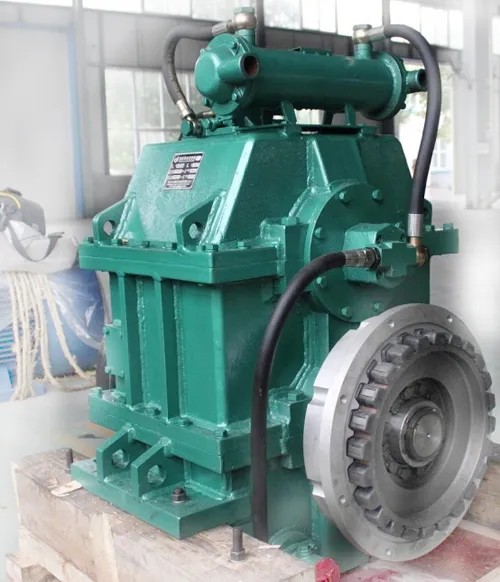As a key component of the ship’s power system, whether the marine gearbox can shift gears normally is related to the operation of the ship. This article deeply analyzes the reasons why the marine gearbox cannot shift gears, covering hydraulic system failure, clutch problems, synchronizer failure, control mechanism problems, and gearbox internal damage. It explains the impact of various faults on shifting gears, such as the failure of the hydraulic system to build up sufficient pressure and cause the failure of shifting gears. At the same time, it is proposed that to solve this problem, each possible cause needs to be checked one by one, and the normal function of the gearbox needs to be restored with the help of professional testing and repair to ensure the safe and efficient operation of the ship.
Importance of Marine Gearbox
Marine gearbox is a key component of the ship’s power system. It is responsible for transmitting engine power to the propeller. Whether it can operate normally is directly related to the ship’s navigation status. If there is a problem with the gearbox, the ship’s power transmission will be affected, which will hinder the ship’s normal navigation.
Reasons for Not Being Able to Shift Gears
-
Failure of the hydraulic system
The gear shift of the marine gearbox depends on the hydraulic system. When the hydraulic oil is insufficient, the system cannot generate enough pressure to push the shifting components, just like a car cannot run normally without oil. Deterioration of oil quality, such as mixing with impurities, moisture or oxidation deterioration, will reduce its lubrication and pressure transmission performance. Hydraulic pump failure cannot pump oil, valve blockage, leakage destroys pressure balance, which will cause the gearbox to be unable to shift gears normally.
-
Clutch problem
In a gearbox equipped with a clutch, severe wear of the clutch plate will reduce friction, causing the clutch to slip, unstable power transmission, and difficulty in shifting gears. Insufficient pressure on the clutch pressure plate cannot fit the clutch plate tightly, resulting in incomplete clutch separation, which will also affect the shifting operation.
-
Synchronizer failure
The function of the synchronizer is to synchronize the speed of the gears to be engaged, so as to facilitate smooth shifting. When the synchronizer is worn or damaged, the gear speed cannot be synchronized, and the gears are prone to be knocked when shifting, which makes it difficult to shift gears, or even impossible to shift gears, and may also damage the gears.
-
Problems with operating mechanisms
Operating mechanisms such as joysticks and connecting rods are responsible for transmitting the operator’s instructions. The looseness of these parts will produce gaps, making the instruction transmission inaccurate; wear will reduce the matching accuracy and affect the operating sensitivity; breakage will cut off the instruction transmission path, making the shift operation impossible to complete, resulting in a failure to shift gears.
-
Internal damage to the gearbox
Long – term high – load use, improper operation or lack of maintenance will damage the gears, bearings and other components inside the gearbox. Gear tooth surface wear, peeling, breakage, bearing wear, jamming and other problems will destroy the transmission structure of the gearbox and directly affect the shifting function.
Summary of Fault Impact
The table shows the impact of various faults on gear shifting. Hydraulic system failure leads to failure to build up sufficient pressure, resulting in gear shifting failure; clutch problems manifest as slippage or incomplete separation, affecting gear shifting; synchronizer failure causes gear speed to be out of sync, making gear shifting difficult; operating mechanism problems cause inaccurate operation, resulting in gear shifting failure; internal damage to the gearbox directly affects gear shifting.

Solution
To solve the problem of marine gearboxes not being able to shift, a comprehensive and detailed investigation is required. First check the hydraulic system, check the hydraulic oil level and oil quality, replenish or replace if necessary, and test hydraulic pumps, valves and other components. Then check the clutch plate wear and pressure plate pressure, and repair or replace related components. Then check the synchronizer, repair or replace damaged parts. Also check the operating mechanism, tighten loose parts, and replace worn or broken parts. Finally, open the gearbox to check the internal components, and repair or replace damaged gears, bearings, etc. The entire investigation and repair process requires professionals to use professional tools to ensure the quality of repairs, restore the normal function of the gearbox, and ensure safe and efficient operation of the ship.


